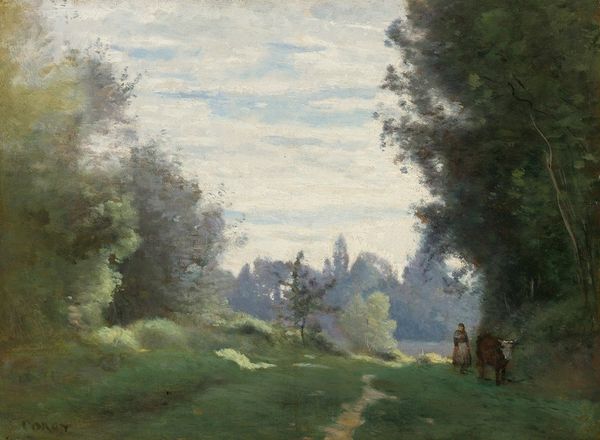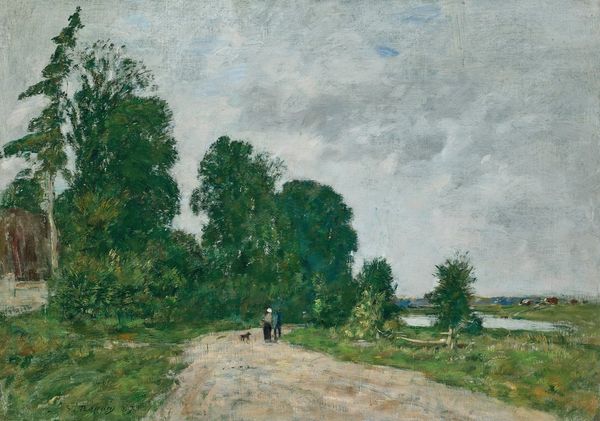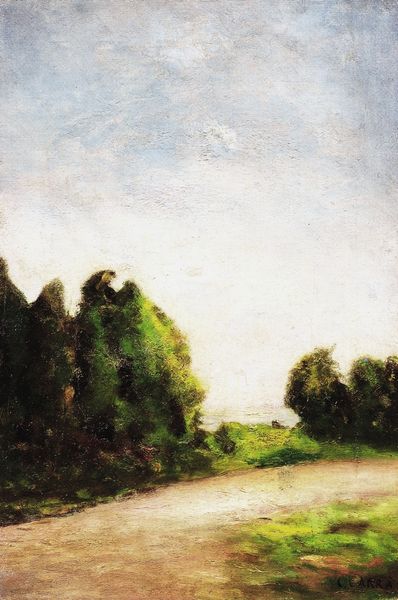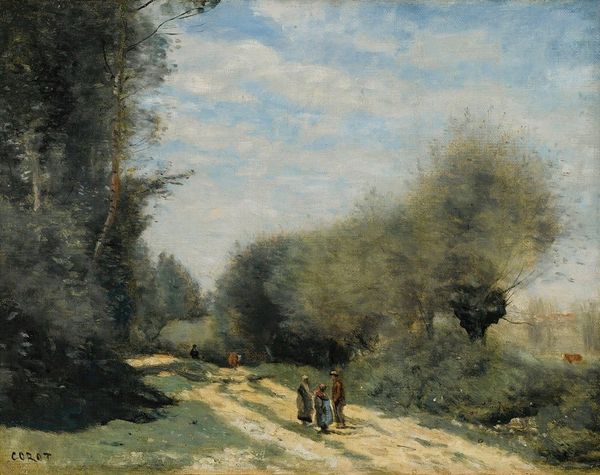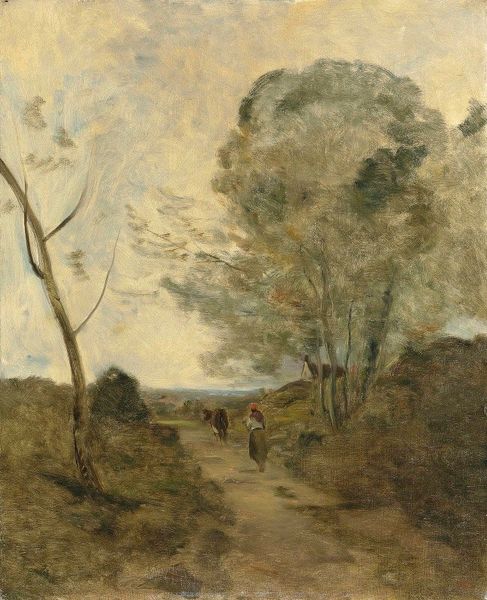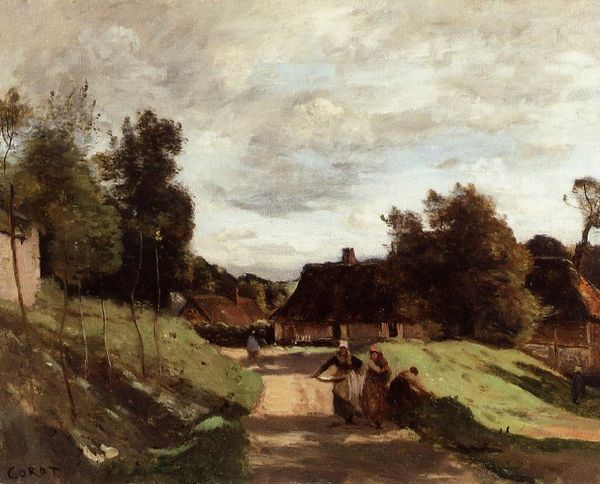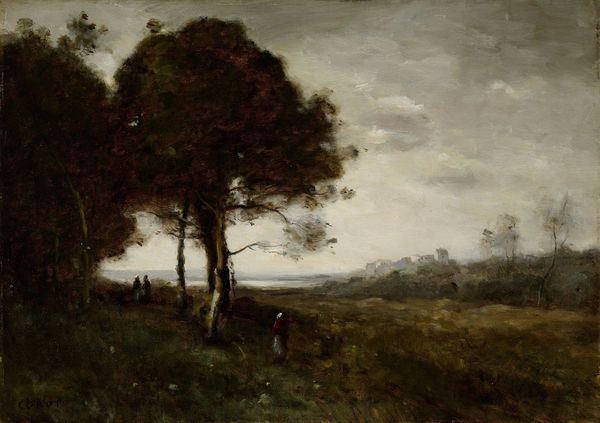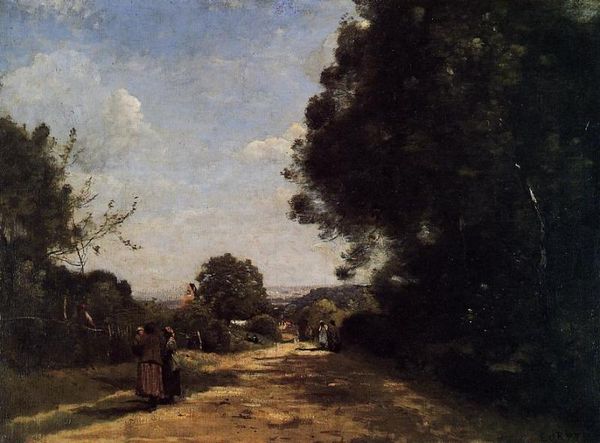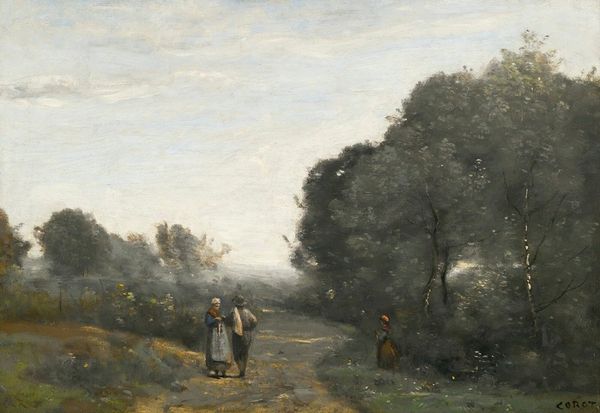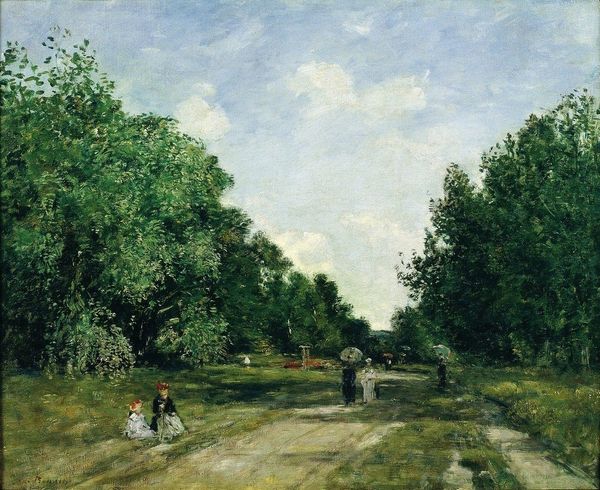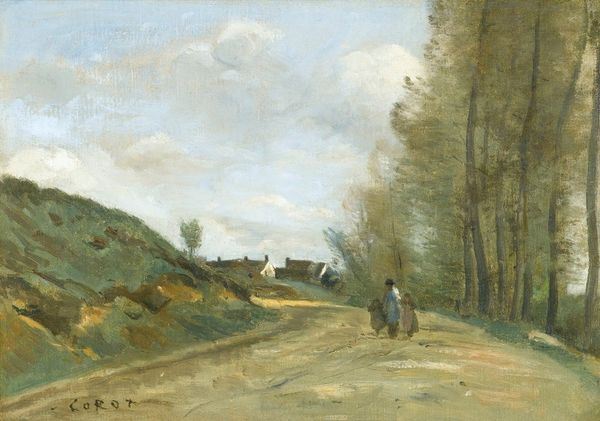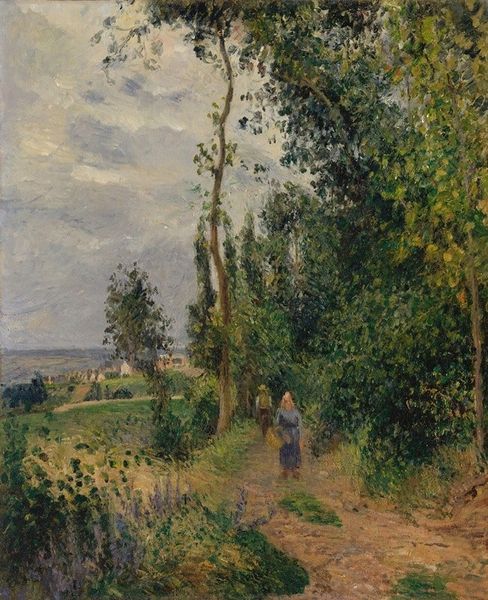
Copyright: Public Domain: Artvee
Editor: This is Camille Corot's "The Environs of Paris," painted in the 1860s, using oil on canvas. The scene is tranquil, but what really strikes me is the prominent road taking you into what appears to be a growing urban setting in the distance, hinting at encroaching development. How do you interpret the artist's choice of this subject matter? Curator: What interests me are the raw materials used, from the pigments derived from the earth to the linen support, cultivated and woven. This piece presents us with the tangible outcomes of resource extraction, manufacturing, and labor of Corot himself, who painstakingly captured this transient landscape. The atmospheric perspective almost disguises a looming Paris. Have you considered the socioeconomic implications of suburban landscapes being commodified as consumable imagery during the industrial revolution? Editor: That's a fascinating angle. I hadn't really thought about the linen and pigments themselves as having such a story. I was more focused on what the painting depicted, this push and pull between rural life and industrial Paris, but the very stuff of the artwork speaks to the same narrative. Curator: Precisely. Think about where Corot sourced his materials. What impact did those extraction processes have on the environments and societies connected to the making of this art? This expands beyond just idyllic scenery, doesn't it? Editor: Absolutely. It changes how I see the relationship between the artwork and its wider context. Now I’m wondering what kind of labor conditions were involved in producing these materials and how this contributed to France's burgeoning industrial era. I didn't expect a landscape painting to open up so many questions about material processes. Curator: By acknowledging those questions, we can connect with a wider web of interconnected labor and the transformation of both society and natural environments which are captured through the production, the distribution, and consumption of art itself.
Comments
No comments
Be the first to comment and join the conversation on the ultimate creative platform.

